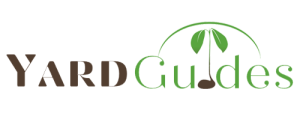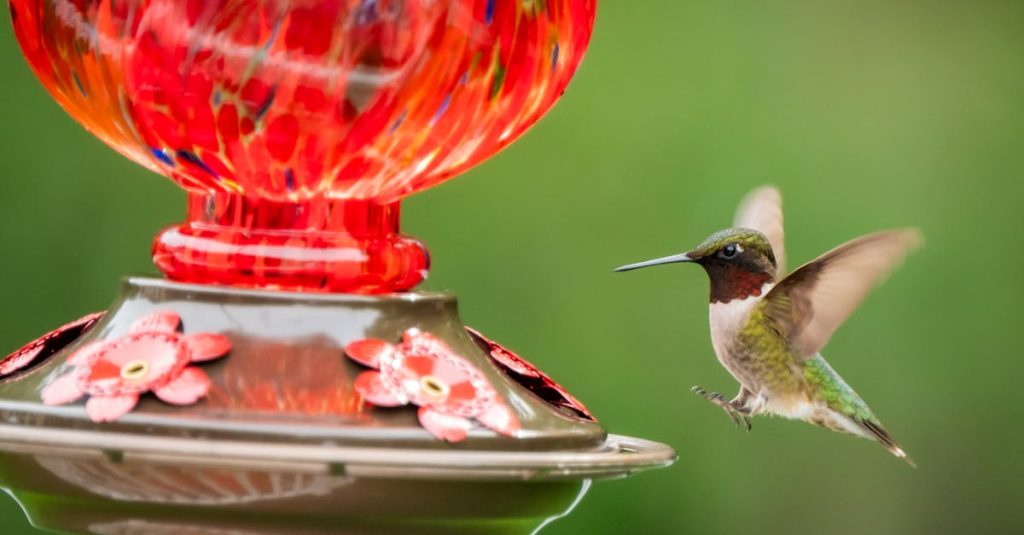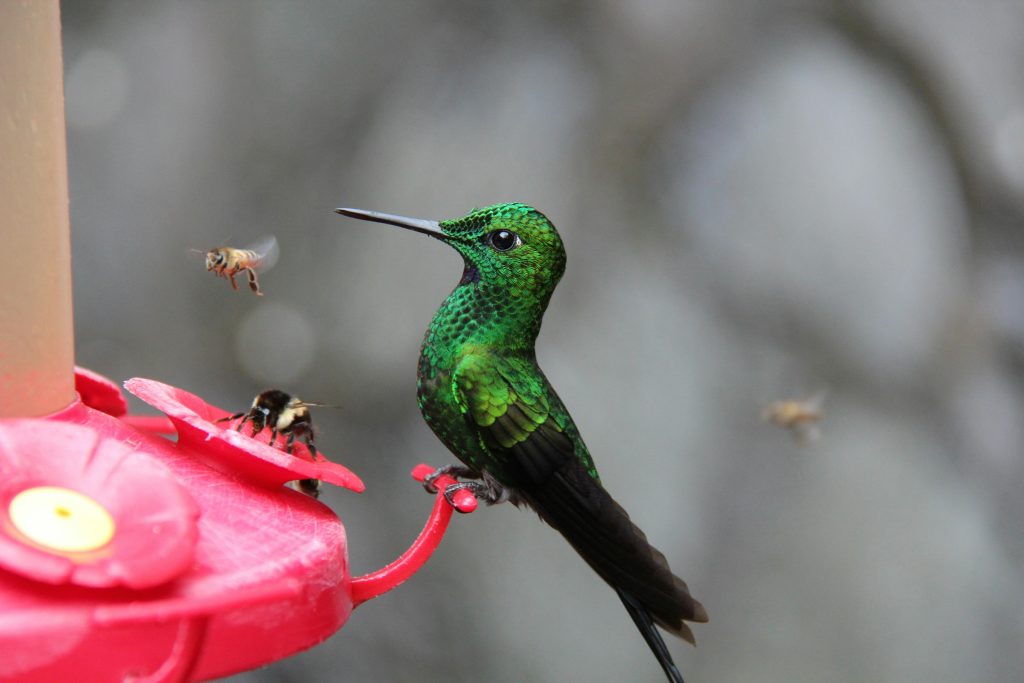Creating a welcoming space for hummingbirds in urban gardens is both rewarding and beneficial. These tiny, vibrant birds bring life and movement to any garden. But where to hang a hummingbird feeder for the best results?
Choosing the right spot for your feeder is crucial. It can make a significant difference in attracting these delightful creatures. The ideal location balances visibility, safety, and accessibility.
Hummingbirds are drawn to bright colors and open spaces. Placing feeders near flowering plants can enhance their appeal. This not only attracts hummingbirds but also supports their natural feeding habits.
Consider the sun and shade balance. Too much sun can spoil nectar quickly, while too much shade might make the feeder less visible. A mix of both is often ideal.
Safety is another key factor. Ensure feeders are out of reach from predators like cats. This helps create a safe feeding environment.
Regular maintenance is essential. Easy access for cleaning and refilling keeps feeders in top condition. This ensures a healthy feeding spot for hummingbirds.
Urban gardens can be transformed into vibrant ecosystems. Thoughtful feeder placement plays a vital role in this transformation.

Understanding Hummingbird Behavior and Feeder Attraction
Hummingbirds are fascinating creatures with specific behaviors. Understanding these behaviors helps in attracting them to your feeder. They are territorial and often defend feeding areas vigorously.
Their attraction to bright colors, especially red, is well-known. Feeders with vivid hues can catch their attention from a distance. This makes color an essential consideration in feeder selection.
To engage hummingbirds, mimic their natural feeding environments. This can include placing feeders near native plants. Such plants provide both food and a familiar habitat.
Here’s how you can enhance feeder attraction:
- Choose red or brightly colored feeders.
- Position feeders near flowers hummingbirds prefer.
- Space feeders to minimize territorial disputes.
Observing hummingbird flight patterns gives insights into where they might visit. They’ll usually hover near familiar feeding spots. Understanding these patterns aids in effective feeder placement.
By integrating these elements, urban landscapes can become hummingbird havens. This approach not only attracts them but supports local pollinator ecosystems.

Key Factors in Hummingbird Feeder Placement
Choosing where to hang a hummingbird feeder requires careful thought. The right location can make your yard a favorite dining spot for these tiny birds. Consider visibility and accessibility for both you and the birds.
Placing feeders near flowering plants boosts their attractiveness. This provides an additional food source and a natural look. Opt for areas where the birds feel secure while feeding, like low-traffic spots.
Proper spacing is crucial to reduce territorial behavior. Hummingbirds can be aggressive, so spacing feeders 10-15 feet apart helps. This encourages more birds to visit your garden simultaneously.
Mind the balance between sun and shade. While shade keeps nectar fresh longer, some sun exposure helps to draw birds in. The ideal spot offers a mix of both, ensuring feeder visibility.
Here are some placement tips:
- Select visible, open spaces.
- Aim for a mix of sun and shade.
- Space feeders to minimize competition.
Thoughtful placement can significantly enhance the appeal of your feeders. It creates a welcoming environment for hummingbirds to thrive.

Sun or Shade: Finding the Right Light Balance
The amount of sunlight your hummingbird feeder receives is crucial. Sunlight can influence nectar freshness and attract birds. Yet, too much sun can spoil the nectar quickly.
Placing feeders in partial shade is often ideal. This provides protection from intense heat while keeping the feeder visible. A combination of morning sun and afternoon shade can work well to maintain nectar quality.
To create the best environment, try the following:
- Experiment with feeder placement to find the right balance.
- Use natural or artificial shade structures like trees or eaves.
- Keep nectar free from intense, prolonged sun exposure.
By managing sun and shade, you create a welcoming spot for hummingbirds. This ensures your feeders remain fresh and functional for longer periods, enhancing their effectiveness.

Height and Accessibility: How High Should You Hang a Feeder?
Choosing the right height for your hummingbird feeder is important for bird safety and convenience. The ideal height balances accessibility for the birds and ease of maintenance for you.
Most experts recommend hanging feeders at eye level, around 4 to 6 feet off the ground. This height allows you to observe hummingbirds closely while making it easy to refill and clean the feeders.
Consider these tips for optimal feeder height:
- Place feeders high enough to avoid ground predators like cats.
- Ensure the height allows easy removal and replacement.
- Account for any slopes or uneven terrain in your garden.
By setting your feeders at the right height, you enhance your garden’s appeal and ensure safe feeding for hummingbirds.

Proximity to Native Plants and Water Features
Integrating native plants around your hummingbird feeder is a smart strategy. These plants provide natural food sources and shelter, enhancing the feeder’s appeal.
Select plants that bloom at different times to offer a steady supply of nectar. This will ensure hummingbirds visit your garden throughout the season. The right combination can also add beauty and biodiversity to your landscape.
Water features, such as birdbaths or misters, make your garden even more attractive. Hummingbirds are drawn to water for both drinking and bathing, and these elements can encourage longer visits.
When planning your feeder layout, remember these tips:
- Choose native flowering plants for continuous blooms.
- Incorporate misters or small fountains to attract hummingbirds.
- Position feeders near water features for combined appeal.
By strategically placing feeders near native plants and water sources, you create a welcoming environment for these fascinating pollinators.

Can Hummingbird Feeders Be Near Other Bird Feeders?
Placing hummingbird feeders near other bird feeders can seem convenient, but it’s important to consider potential interactions. Larger birds at other feeders might intimidate hummingbirds, even though these tiny birds are not easily scared.
To minimize conflict, provide some distance between different types of feeders. This reduces competition and allows hummingbirds to feed in peace. Aim for at least 10 to 15 feet of separation between the feeders.
Additionally, observe the specific behaviors in your garden. You might find that some bird species coexist peacefully, allowing for closer placement. Here are some placement tips:
- Keep feeders at least 10-15 feet apart.
- Monitor bird interactions and adjust as needed.
- Create separate feeding zones for different bird species.
Ultimately, thoughtful feeder placement enhances harmony in your garden, promoting a more inclusive environment for all birds.

How Far Apart Should Hummingbird Feeders Be?
Hummingbirds can be territorial, especially around feeding stations. To maintain harmony, it’s crucial to space your feeders correctly. Providing multiple feeding options also helps to lower competition and aggression.
A good rule of thumb is to place feeders about 10-15 feet apart. This distance allows multiple hummingbirds to feed without feeling threatened. It also gives these tiny birds space to maneuver comfortably.
While spacing is important, you might also consider visual barriers like shrubs or trees. These can help reduce direct line-of-sight competition among hummingbirds. Here are some tips for spacing:
- Position feeders 10-15 feet apart.
- Use natural barriers to provide cover.
- Observe bird behavior to adjust spacing if needed.

Best Places to Hang Hummingbird Feeders in Urban Gardens
Urban gardens present unique opportunities and challenges for hanging hummingbird feeders. In these compact settings, thoughtful placement can enhance both feeder visibility and hummingbird attraction.
One effective strategy is to utilize available vertical space. Hanging feeders from balconies or roof overhangs can offer great visibility and protection from ground-level disturbances. They also provide a perfect view for human observers.
Consider positioning feeders near flowering plants native to your area. These will naturally attract hummingbirds, making it easier for them to discover the feeders. Native plants also offer a backup food source when feeders are empty.
Porches and patios can also be productive spots. Ensure these areas offer some shade without compromising visibility. Balance is key for keeping nectar fresh yet accessible.
Always observe and adjust placement as needed, based on hummingbird activity and seasonal changes. Here are some tips for urban garden feeder placement:
- Utilize vertical space like balconies and overhangs.
- Position near native flowering plants.
- Ensure porches offer shade and visibility.


Creative Feeder Placement: Porches, Trees, and Poles
Creating a welcoming space for hummingbirds involves creativity in feeder placement. Porches are a great starting point. They offer easy access for both birds and humans, and can provide shelter from harsh weather.
Trees are another excellent choice. They offer natural protection and mimic the birds’ usual feeding environments. However, ensure that branches don’t obstruct the feeder’s access or visibility.
Poles can add flexibility, especially in open spaces. Adjustable hooks allow for customizing height and location based on observation of hummingbird activity. They are also ideal for placing multiple feeders, helping to reduce territorial disputes among birds.
Experimenting with different placements can reveal which locations are most appealing to your local hummingbird population. Here are some creative ideas for where to place feeders:
- Use sheltered spots on porches.
- Hang from sturdy tree branches.
- Install poles in open spaces for versatility.

Safety Considerations: Predators, Windows, and Hazards
Safety is a paramount concern when choosing where to hang a hummingbird feeder. Predators like cats pose a significant threat to these small birds. It’s essential to place feeders out of reach from possible ambush spots near the ground.
Windows present another danger. Birds often collide with glass, mistaking reflections for open space. To prevent this, apply decals or hang feeders far enough away to avoid confusion.
Other hazards include exposure to extreme elements. Protect feeders from strong winds or heavy rain, which can spill nectar or damage feeders. Secure hooks and check feeder stability regularly.
Consider the following safety tips for hummingbird feeder placement:
- Keep feeders elevated, away from prowling cats.
- Use window decals to prevent bird collisions.
- Ensure feeder stability against harsh weather.

Maintenance and Accessibility: Easy Cleaning and Refilling
Regular maintenance is crucial for healthy hummingbird feeding. Feeder placement should consider ease of access for cleaning. Dirty feeders can harbor mold and bacteria, harming the birds.
Place feeders where you can easily reach them. This encourages frequent cleaning, especially in warm weather. An accessible location makes it easier to keep feeders filled with fresh nectar.
Consider the following tips for maintaining hummingbird feeders:
- Use feeders with wide openings for easy cleaning.
- Refill and clean every few days to ensure fresh nectar.
- Secure feeders properly to prevent spills during maintenance.

Seasonal Adjustments and Urban Garden Design Tips
As seasons change, so should your hummingbird feeder locations. The shift in sunlight and temperatures can affect feeding habits. Pay attention to where the sun shines and adjust placement for optimal light conditions.
During summer, heat may spoil nectar quickly. Opt for shaded spots to keep it fresh. In cooler months, sunnier locations can help maintain activity.
Urban gardens should be dynamic, reflecting seasonal shifts and blooms. Integrate these garden design tips to keep your space vibrant year-round:
- Select diverse plants that bloom in different seasons.
- Use vertical space creatively with hanging baskets.
- Introduce seasonal color schemes to guide hummingbirds.
Keeping your garden adaptable ensures consistent visits from hummingbirds. Creating a thriving habitat amidst urban sprawl requires thoughtful design.

Common Mistakes to Avoid When Hanging Hummingbird Feeders
Placing feeders incorrectly can deter hummingbirds. Common errors include choosing spots with little to no visibility for birds. Always ensure feeders are in open areas.
Overfilling feeders can lead to wasted nectar and spoilage. Fill only what can be consumed in a few days. Regularly check and adjust the amounts as needed.
Ignoring feeder hygiene is another pitfall. Dirty feeders can harm birds. Keep a cleaning schedule to maintain feeder health. Here are other errors to watch:
- Using nectar with additives.
- Hanging feeders too low where predators lurk.
- Overcrowding with too many feeders.
By avoiding these mistakes, you’ll create a more welcoming environment for hummingbirds.

Conclusion: Enhancing Urban Biodiversity with Thoughtful Feeder Placement
Thoughtfully placed hummingbird feeders are not just an attraction; they are a cornerstone of urban biodiversity. These feeders invite hummingbirds into city gardens, supporting their role as pollinators.
By integrating native plants alongside feeders, urban landscapers can create environments that support hummingbirds year-round. This blend enriches habitats, offering sustenance to birds and beauty to gardens.
Every feeder placement decision should consider bird safety and environmental harmony. Optimal feeder locations empower hummingbirds and enhance their presence in urban areas, making spaces vibrant and alive. Urban landscapers who prioritize such detail contribute to the prosperity of hummingbird populations.



